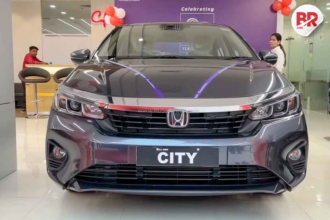
The Royal Enfield Scram 440, one of the most anticipated bikes of 2025, has hit an unexpected roadblock—a sudden recall and sales pause.
If you were excited about this rugged scrambler, this news might sting. But before you write it off, let’s dive deep into what’s happening, why it matters, and whether the Scram 440 is still worth your money.

Why Was the Scram 440 Recalled?
Royal Enfield hasn’t released an official statement detailing the exact issue, but dealer sources and early owner reports suggest a potential fault in the fuel injection system or wiring harness. Some riders have complained about engine stalling or inconsistent throttle response, which could be a safety concern.
Why recalls happen:
- Even well-engineered bikes can have defects.
- Better to fix it now than risk accidents later.
- Royal Enfield has a history of recalls (remember the Himalayan’s early suspension issues?).
What should owners do?
- If you already own a Scram 440, expect a call from your dealership.
- Free inspection and repairs will be done at authorized service centers.
- No reports of major failures yet, so don’t panic—just get it checked.
Also Read Royal Enfield Hunter 350 2025 Breaks Cover at Rs 1.50 Lakh — See What’s New!
Sales Halted: When Will the Scram 440 Be Back?
Royal Enfield has temporarily stopped deliveries of the Scram 440. Showrooms aren’t accepting new bookings until the issue is resolved.
Expected timeline:
- Dealers suggest June-July 2025 for a fix.
- If the problem is minor, sales could resume sooner.
- If it’s a bigger manufacturing flaw, delays could stretch further.
Competitors eyeing the gap:
- Honda CB350 – Smoother engine, but less off-road capability.
- Yezdi Scrambler – Similar vibe, but not as refined.
- Hero Xpulse 200 4V – Cheaper, but less power.
If you’re in a hurry, these are options—but the Scram 440 still has unique appeal.
Should You Still Buy the Scram 440 After the Recall?
Short answer: Yes, but wait.
Reasons to Still Consider It:
- Affordable & Stylish – One of the best-looking scramblers under ₹2.5 lakh.
- Proven Engine – The same 440cc motor as the Himalayan, now refined.
- Off-Road Ready – Better suspension and ground clearance than most rivals.
View this post on Instagram
Reasons to Wait:
- Early adopters risk unresolved issues – Let others test the post-recall bikes first.
- Potential resale value dip – Recalls can temporarily hurt resale prices.
- Competitors may offer discounts – Honda or Yezdi might push promotions to lure buyers.
Best move? Hold off until August-September 2025—by then, Royal Enfield should have ironed out all issues.
Also Read Honda CB300R Headlight Recall Sparks Safety Fears: Are You at Risk?
The Bigger Picture: Do Recalls Kill a Bike’s Reputation?
Not necessarily. Some of the best-selling bikes had early recalls:
- KTM 390 Duke (2013) – Fuel pump issues, now a bestseller.
- Royal Enfield Himalayan (2016) – Early suspension problems, now a cult favorite.
- Bajaj Dominar 400 – ECU glitches, later fixed.
If Royal Enfield handles this transparently, the Scram 440 will recover. But if they stay silent, trust could erode.
Final Verdict: Is the Scram 440 Still a Good Buy?
- If you already own one – Get it checked, but don’t worry too much.
- If you’re planning to buy – Wait 2-3 months post-recall.
- If you need a bike urgently – Look at alternatives for now.
Recalls are frustrating, but they don’t mean the bike is bad—just that the manufacturer caught a problem early. Once fixed, the Scram 440 could still be one of the best mid-weight scramblers in India.
What’s Next?
- Follow Royal Enfield’s official updates.
- Check user forums for real-world feedback post-recall.
- Test ride again before buying to ensure everything feels right.
Bottom line? The Scram 440’s journey isn’t over—it’s just a detour. Stay patient, and you might still get a great bike.
Also Read The Secret Revolution Behind Royal Enfield HunterHood (It’s Not Just About the Bike)












